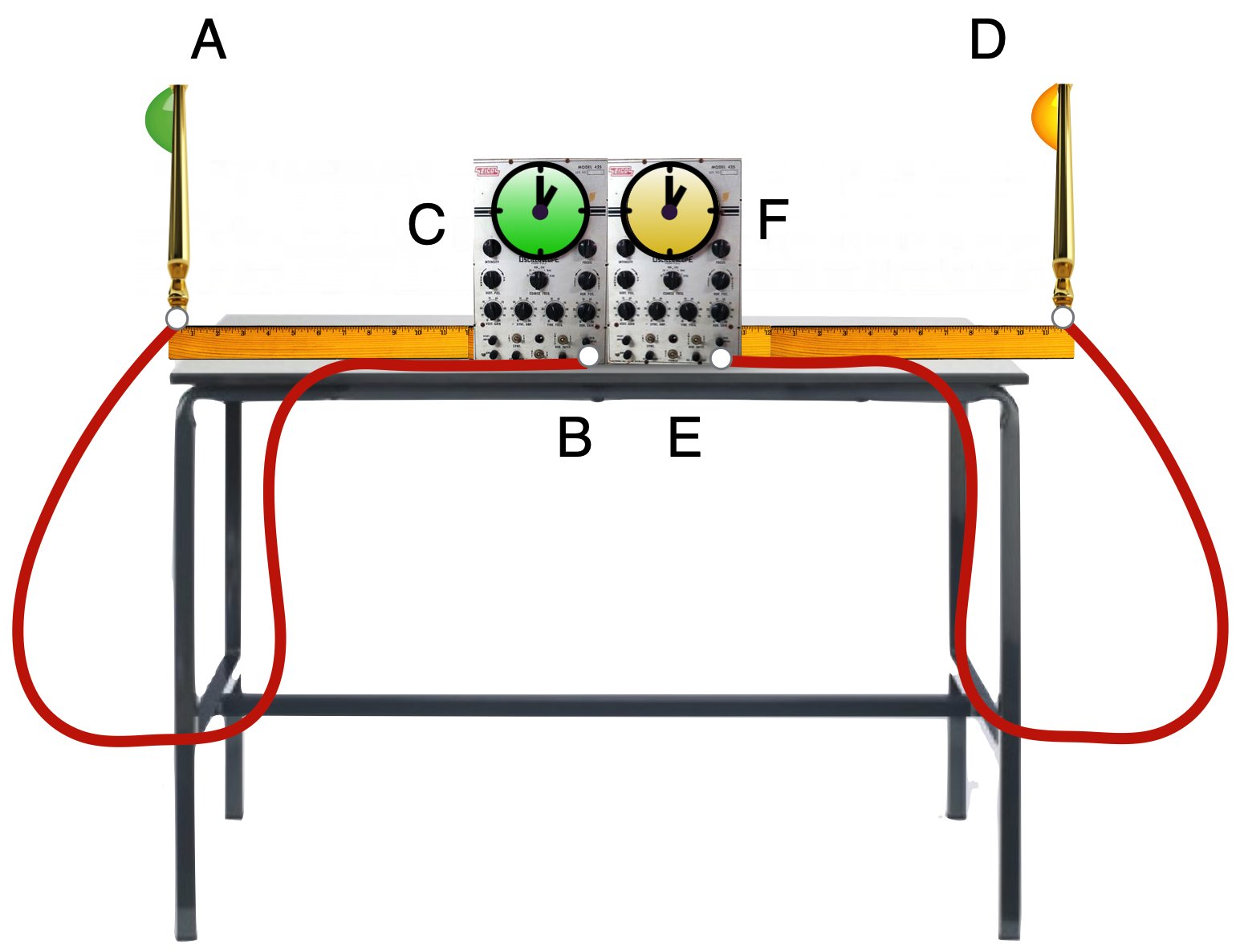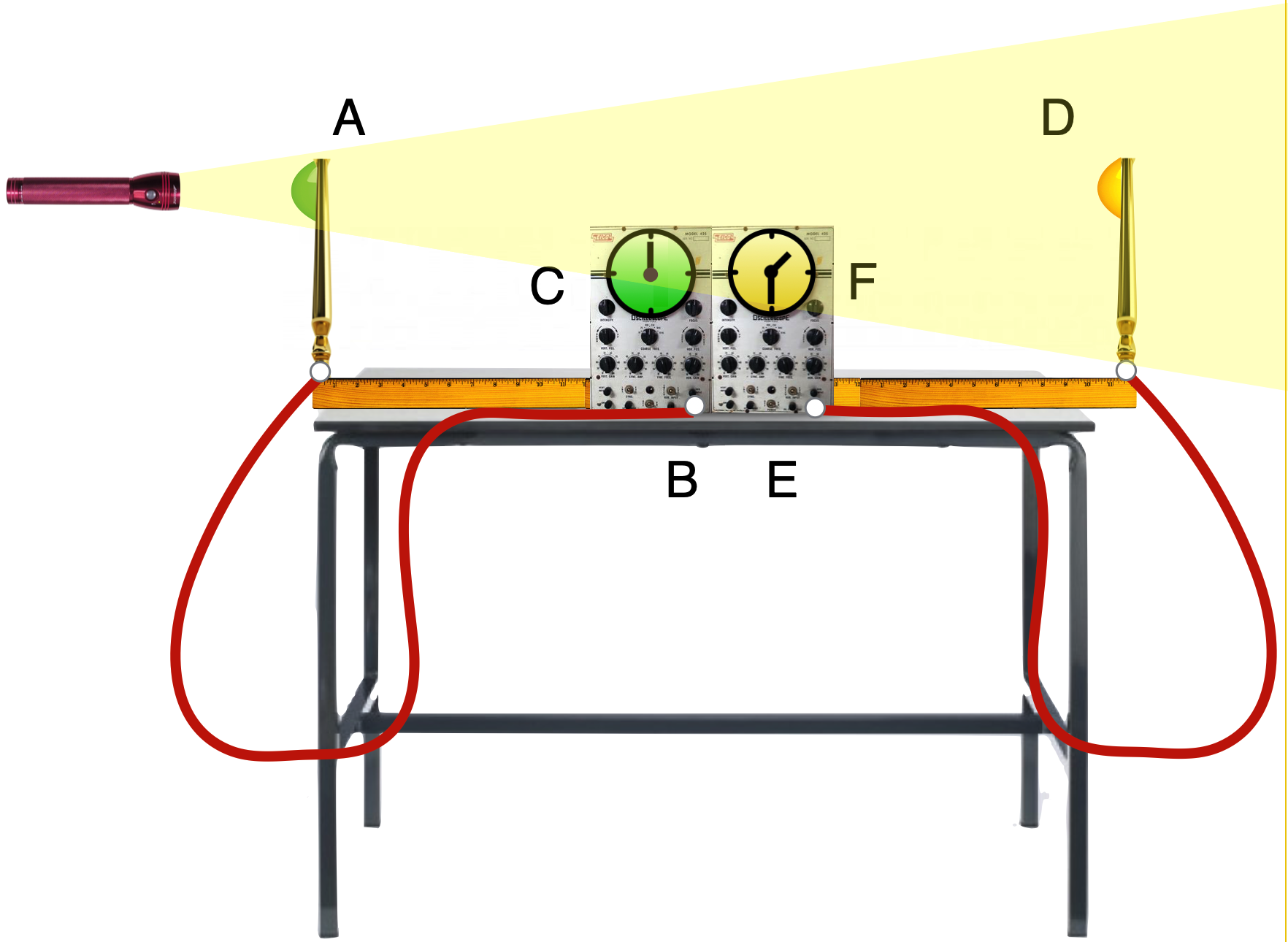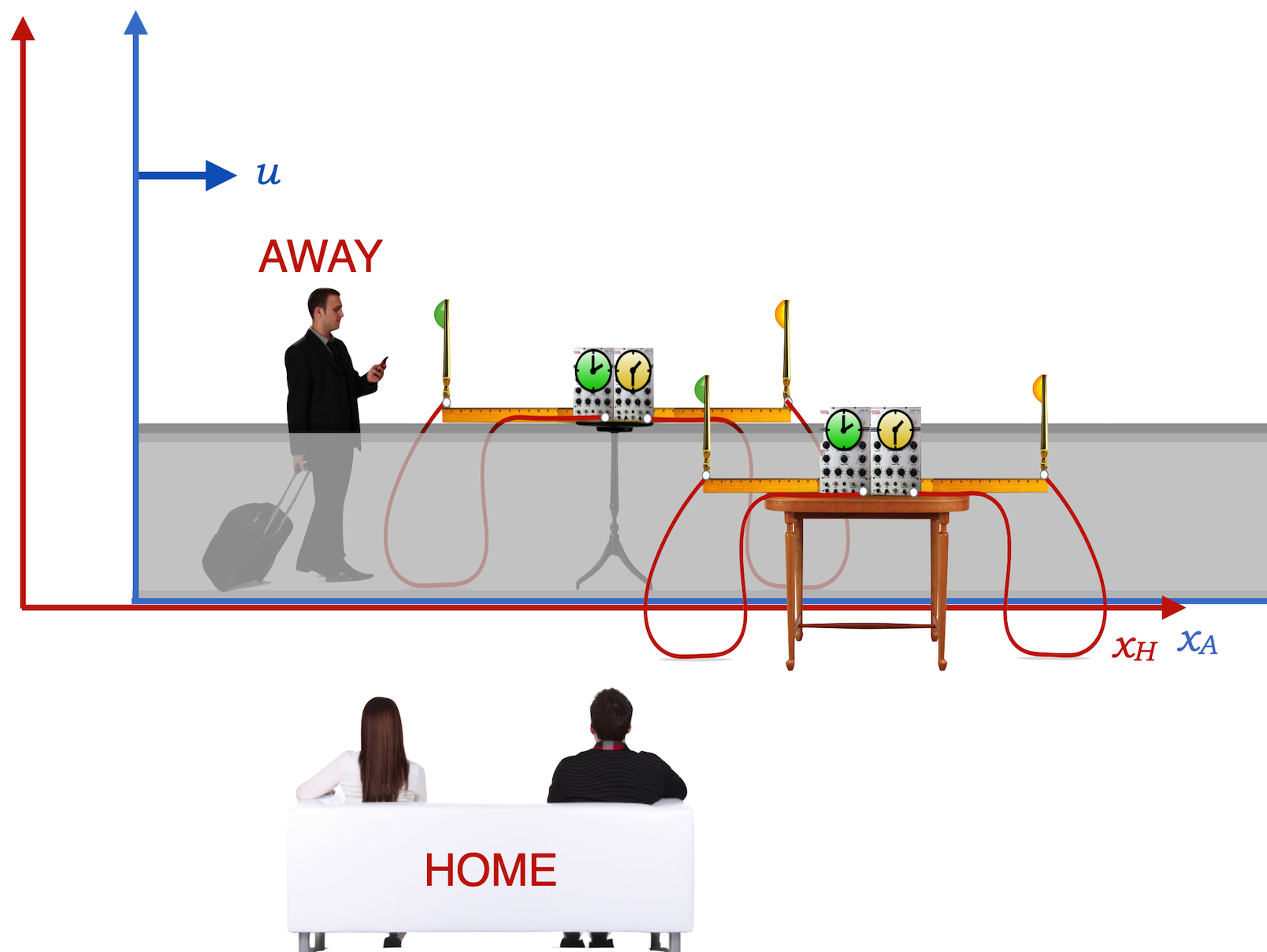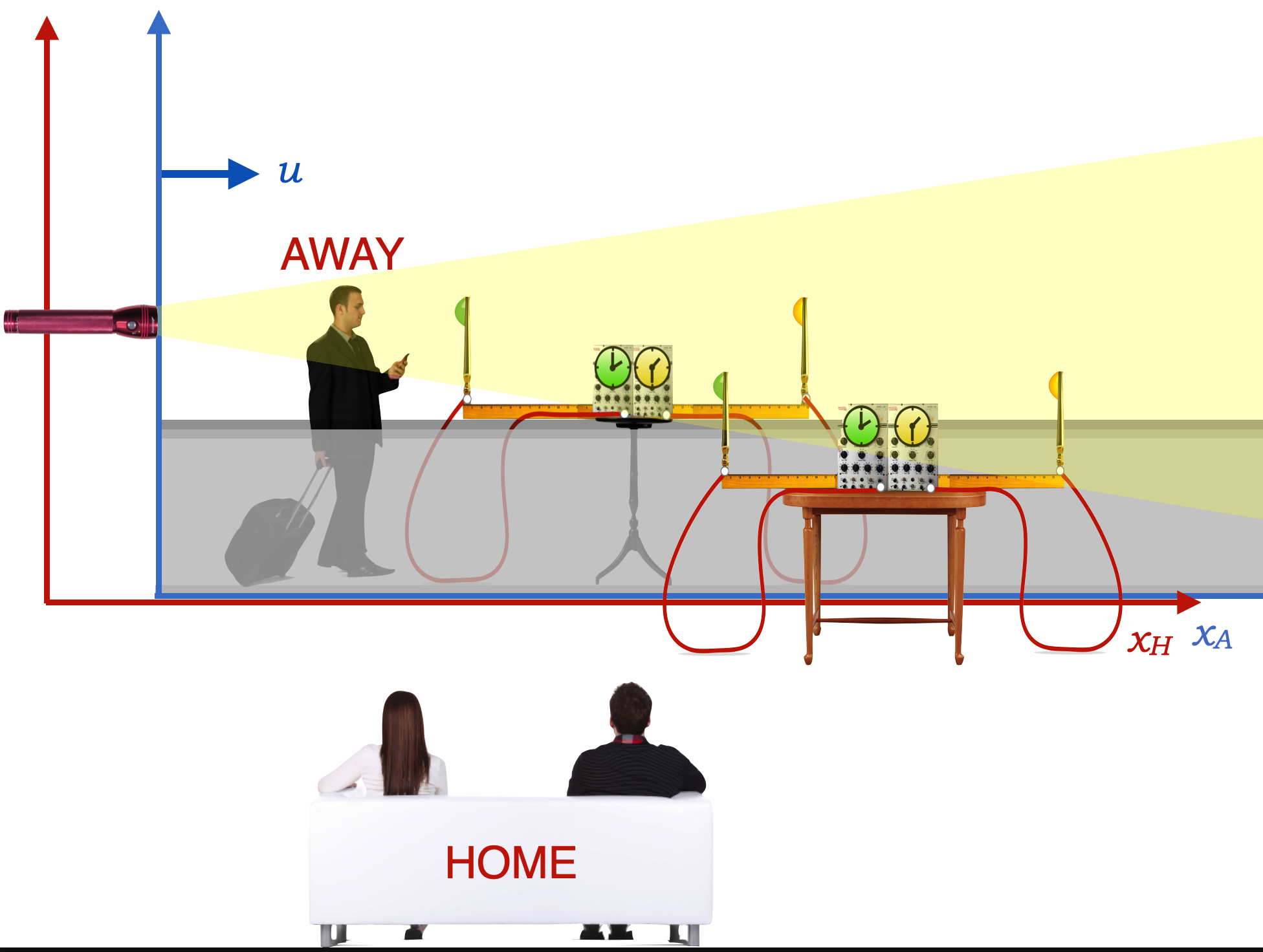16.5. Double Down on the Second Postulate#
There will be consequences! Here’s a thought-device. A and D are light detection instruments–notice that there are meter sticks enforcing that they are the same distance from the center, C and F are time measuring instruments, and B and E are the connections of the detectors to the time measuring devices. The are both connected by identical, same-length cables.

If a beam of light travels from A to D the time that A and D detect the beam can be determined by C and F and knowing the distance between A and D, the speed of light can be measured:

Notice that F has registered the finite time that the light took to go from A to D.
Now let’s build two setups, one for Couch People and one for Sidewalk Guy back at the airport.

And we’ll fix a light source in the airport and shine it down the concourse so that it intercepts both instruments, the one moving with Sidewalk Guy and the one beside the sidewalk in the Home frame with Couch People.

What do the two devices determine for the speed of light in those two apparently different frames of reference?
By now you know:
Sidewalk Guy’s instrument would record: \(c\)
Couch People’s instrument would also record: \(c\)
Strange, isn’t it. Obviously, I wouldn’t have led you this far if there wasn’t overwhelming support – dare I say, confirmation – that this bizarre situation isn’t exactly what nature does. Before I get to the evidence, let’s work out what some of the practical ramifications are by specifically following the Second Postulate – that absolutely invariant quantity of \(c\) – to it’s forced conclusions. In the rest of this lesson we’ll consider:
The behavior of inertial co-moving clocks
The behavior of inertial co-moving meter sticks
In the subsequent lessons we’ll add to this by considering:
The behavior of speeds in an away frame as determined by co-moving, inertial observers
The consequences for space travel
The consequences for what energy is (the T-shirt equation)